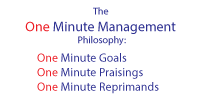David McCann’s recent article Passive Aggression cites an ongoing trend of 401K Plan Sponsors moving toward low-fee index funds. According to a recent survey by Cerulli Associates, many plans are making theses changes to help prevent law suits as opposed to reducing costs. And, McCann warns that these plan sponsors might be exposing themselves to additional liability by doing so. He is correct. And, he is missing the larger point: too many plan sponsors don’t understand their fiduciary responsibilities.
The Employee Retirement Income Security Act (ERISA) requires plan fiduciaries to act prudently and solely in the interest of the plan’s participants and beneficiaries, prohibits self-dealing, and provides judicial remedies when violations of these standards cause harm to plans.
McCann doesn’t see any problem with adding index funds to plans. After all, they should always have significantly lower fees than an actively managed funds. They can also be a reasonable method of managing risk. He warns that plan sponsors get into trouble when they act for the wrong reason: to prevent litigation. To be fair, I agree with McCann’s point. Plan Sponsors who use such logic are certainly not helping their case.
And this points to the bigger problem: many Plan Sponsors don’t understand how to properly act in a fiduciary manner. Outlining all of the nuances and best practices of being a great fiduciary is beyond the scope of the article. But, a great start is for plan sponsors to ensure they actually act in the best interest of plan participants. Another great step is maintain records of the decision making process and criteria for the plan. Of course taking these actions won’t prevent a lawsuit. They will, however, go a long way in building a strong defense.
Full Disclosure: I am very much a Boglehead, and I encourage my friends and family to be as well.
Side Note: About a month ago, John Oliver did a nifty piece on how much 401K fees cost plan participants.

